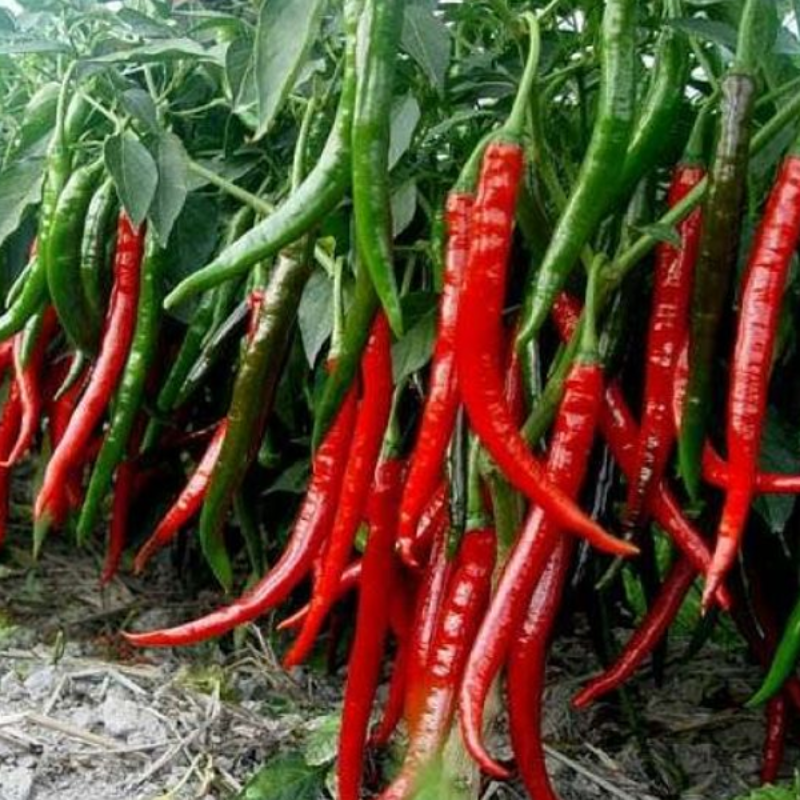- Species and varieties: The long red chili hot pepper, also known as Capsicum annuum, is a popular variety of chili pepper. It is known for its elongated shape and vibrant red color when fully mature. Varieties include Cayenne, Thai, and Serrano peppers, each with its own unique flavor profile and heat level.
- Hybrid or heirloom: Long red chili hot pepper seeds can be either hybrid or heirloom. Heirloom varieties are open-pollinated and have been passed down through generations, while hybrid varieties are bred for specific traits such as disease resistance and uniformity.
- Pruning and training: Pruning is not typically necessary for long red chili hot peppers, but removing the first few flowers can encourage stronger plant growth. Staking or caging may be required to support the plants as they grow and bear fruit.
- Fertilization needs: Chili peppers benefit from a balanced fertilizer with equal parts nitrogen, phosphorus, and potassium. Fertilize at planting time and again when the plants start to flower. Avoid over-fertilizing, as this can lead to excessive foliage growth at the expense of fruit production.
- Hardiness zones: Long red chili hot peppers are best suited for USDA hardiness zones 9-11. They thrive in warm climates and can be grown as annuals in cooler zones.
- Climate requirements: These peppers require a warm growing season with temperatures between 70-85°F (21-29°C). They need full sun exposure for at least 6-8 hours a day and well-drained soil with a pH between 6.0 and 7.0.




